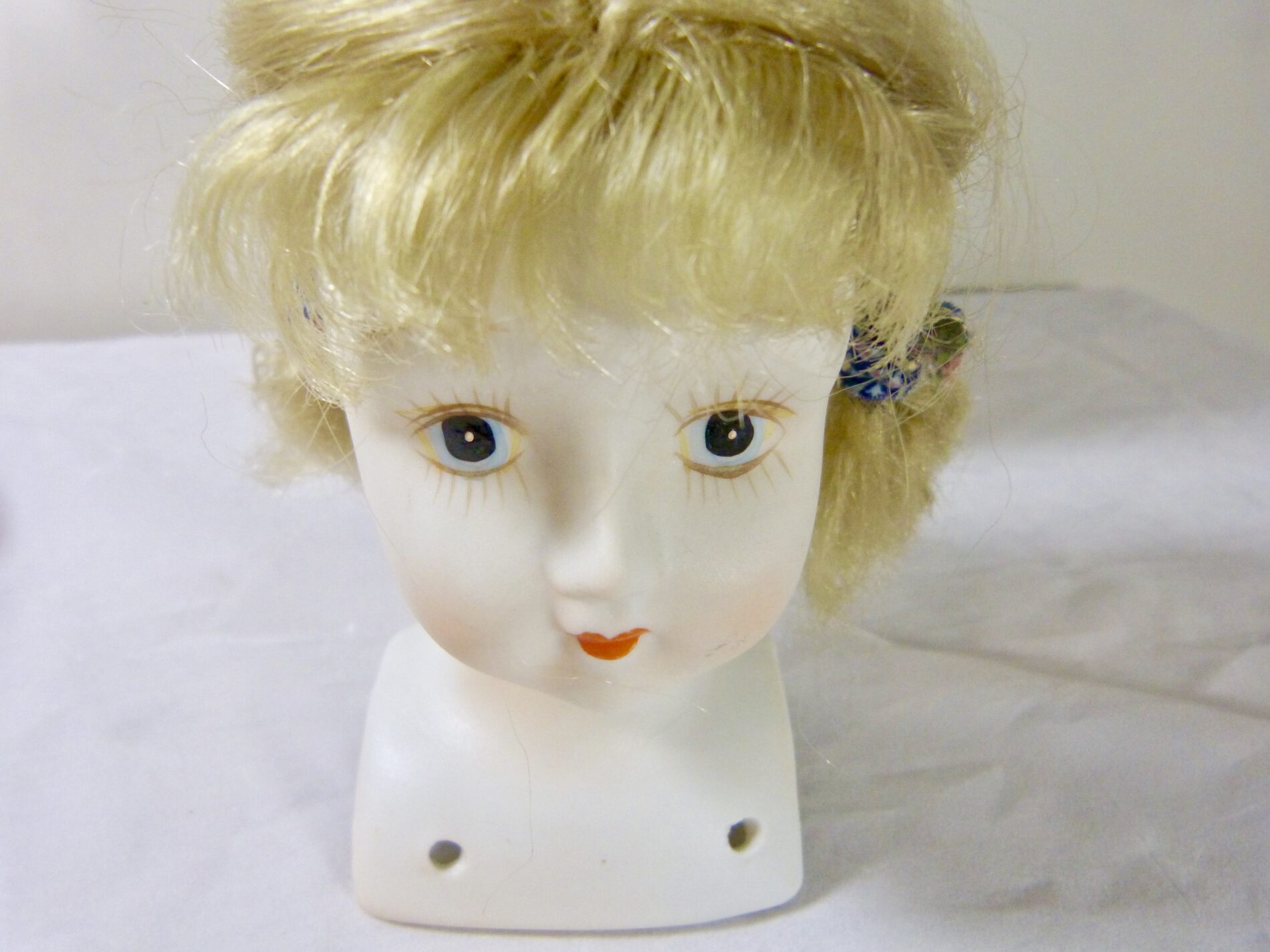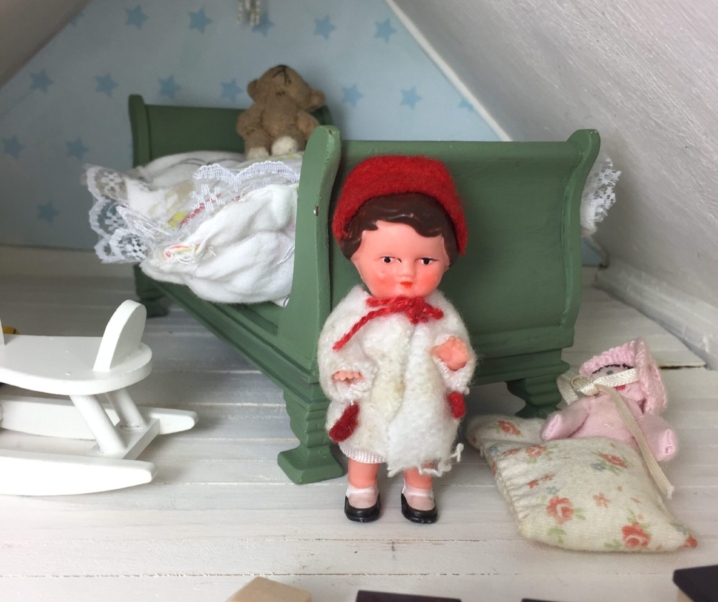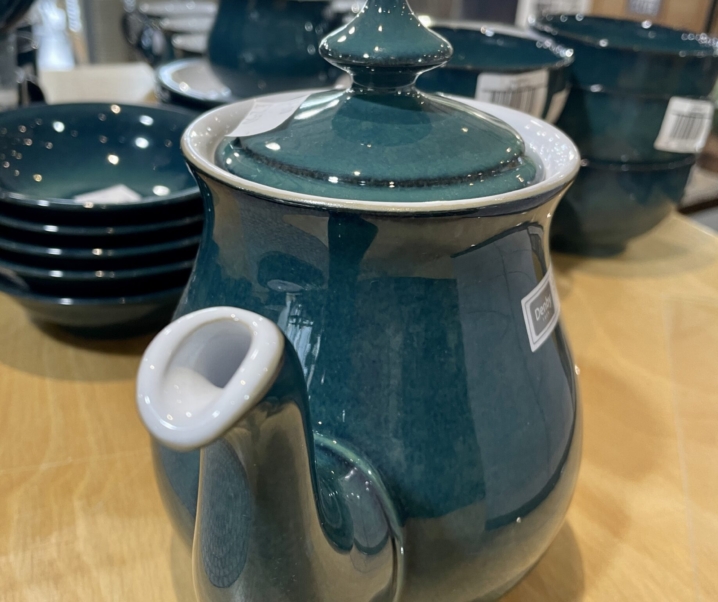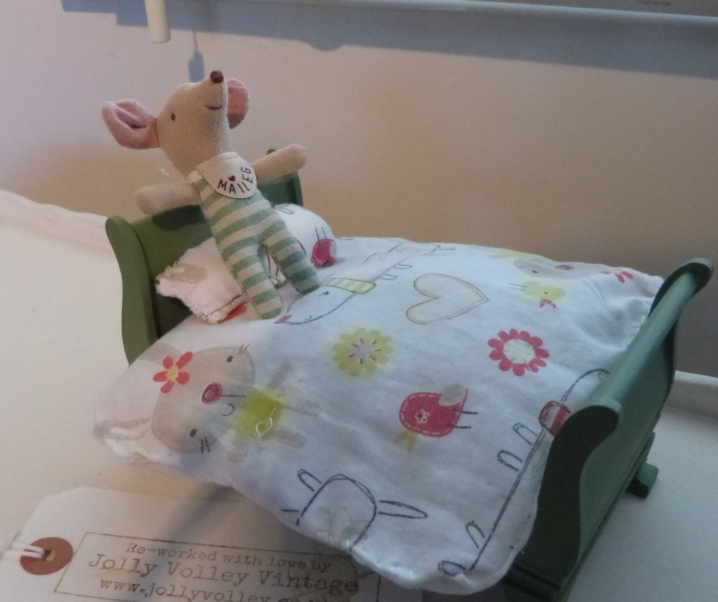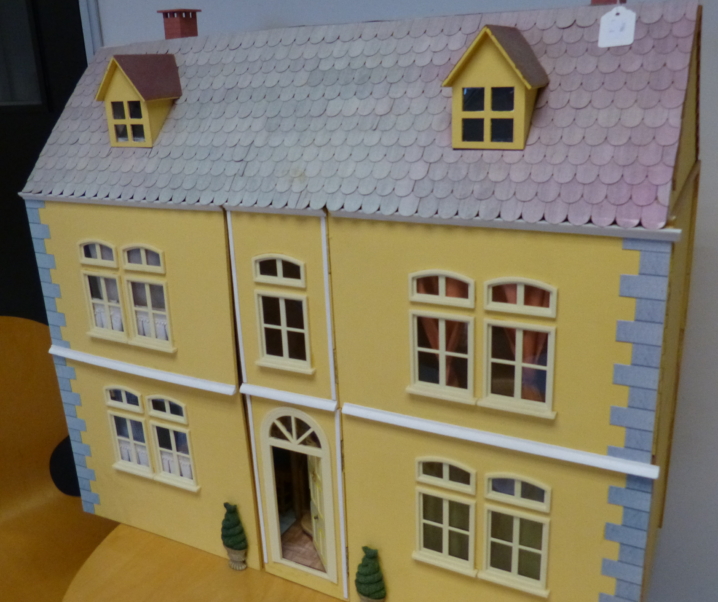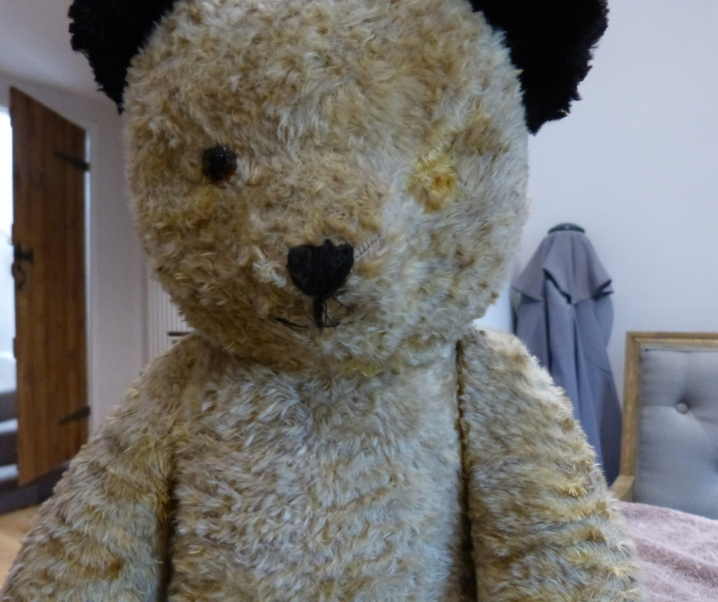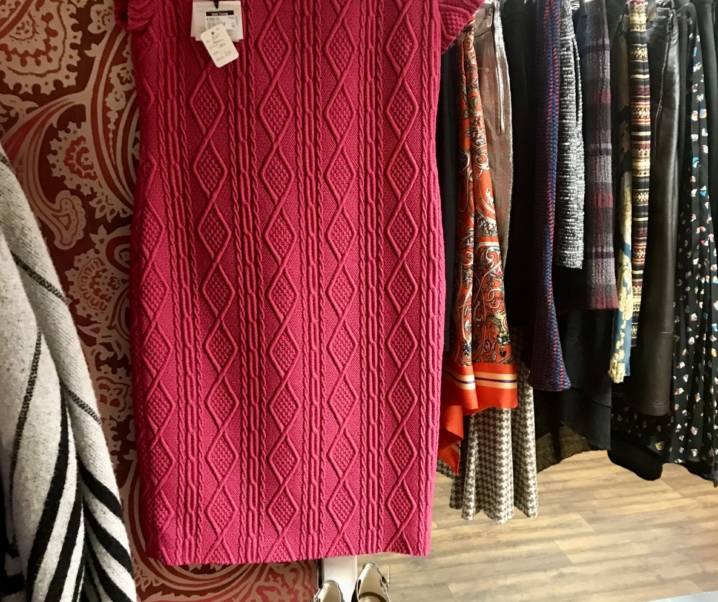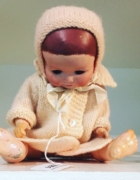Anyone who has ever attended an auction dreams of the sleeper. A valuable item which, because it lies in a banana box of old chisels, has been over-looked, dismissed or even wrongly labelled by the in-house valuer.
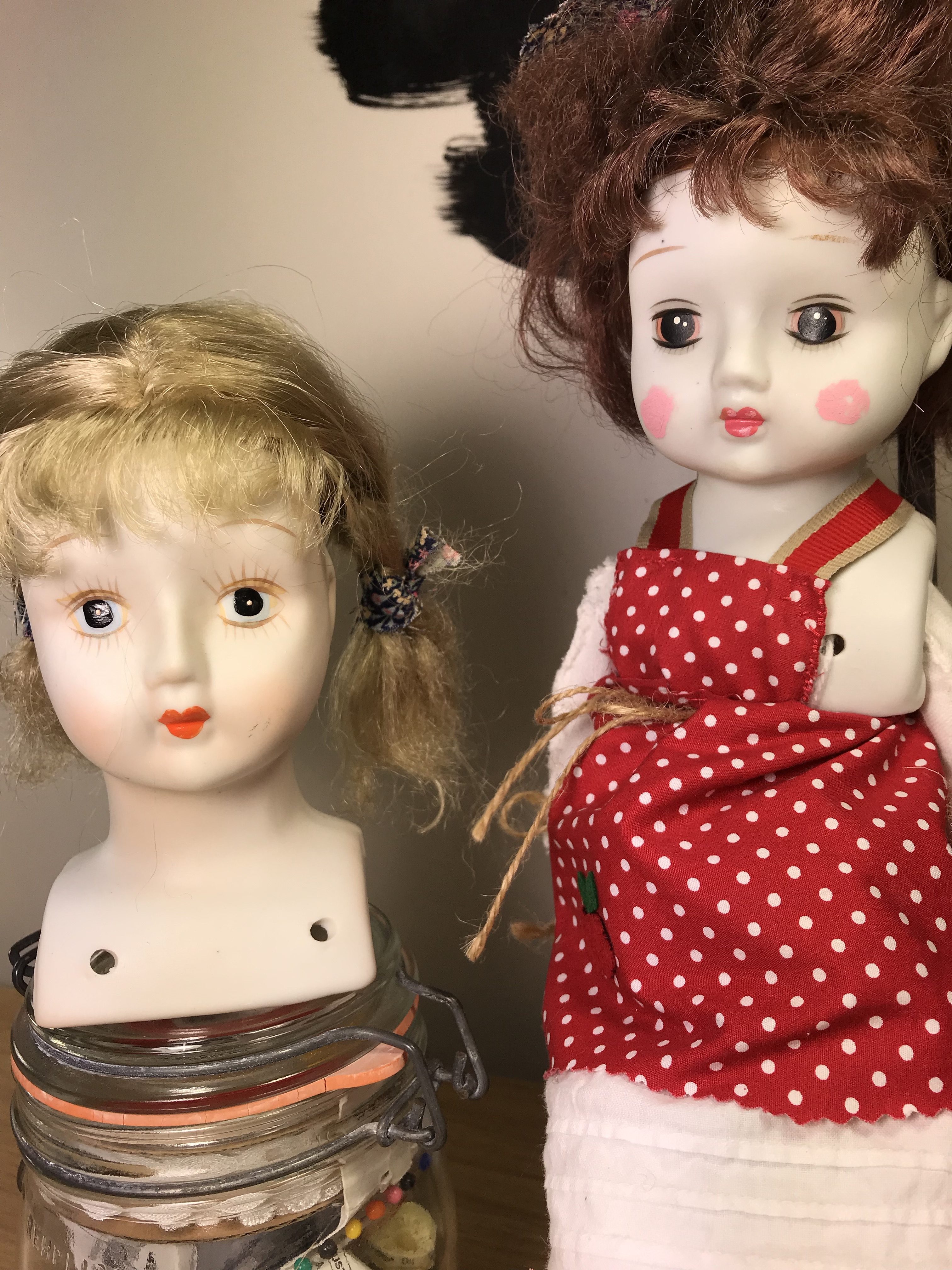
Which explains the hand tremor and dry mouth when I spotted a pair of porcelain dolls peeping out from the voluminous lace skirts of a life-sized 1960s walking doll. Closer examination revealed them to have shoulder plates (a porcelain head attached to a cloth body) typical of the pale, almost luminescent, dolls made from fine china in the 1800s. Moreover, their plain ‘pioneer’ style of clothing and hair was reminiscent of a fashion popular on mid-19th century dolls which can command hundreds, if not thousands of pounds for a rare, undamaged specimen.
These appeared to be perfect.
The catalogue description simply outlined the questionable merits of the tatty-looking walking doll. The porcelain pair were passed over as ‘two others’. There was no provenance, reserve price or estimated value. Even so, they just had a ‘feel’ of something special. They had that indefinable smell of old age; a heady mix of moth balls, wet paper and old gardening clothes which intoxicates the senses of a vintage collector.
Imagine the joy when I secured the dolls for a maiden bid of £25.

The 1960s walking doll was everything I feared she’d be – and more. The suspiciously flat-top hairstyle revealed itself to be a piece of cardboard glued to the top of her head. The poor girl had been lobotomised. By the time I’d driven the eight miles home, I wished I could befall the same fate. The fusty smell from her ‘two others’ was had become so overwhelming; it took two showers to get the smell from my nostrils.
A night in the garage among the petrol fumes and slug pellets did nothing to abate the odour. Although I am well aware that washing clothes can affect the value of priceless dolls, I had to plunge their clothes in a Lux bath.
That’s when I found the zips. Bright, shiny modern-looking zips; a way of fastening clothes which first appeared in women’s dresses in the 1930s.
I was down – not out. As an amateur enthusiast, I know children swap clothes on their dolls all the time. Modern zips aren’t, necessarily, an indicator of a contemporary doll.
The same couldn’t be said for the the plastic music box buried in their fabric bottoms. There was nothing remotely Victorian about the shiny chrome key held in place by pan-head screws. When I turned this key, I was half-expecting to hear Britney’s ‘Oops I did it again.’
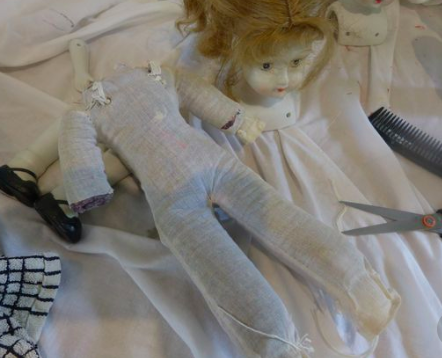 To make matters worse, the removal of the doll’s clothes only intensified their ghastly ‘dead pheasant’ smell. What I’d taken to be Victorian age was clearly a sickening mix of desiccated lavender, decades of dust and Lambert & Butler cigarettes. It took me a whole day to wash the nicotine out of their hair but I couldn’t save the bodies. Instead, I made a new body for the prettier of the two dolls – fittingly out of a Victorian tablecloth – and returned them both to the garage shelf.
To make matters worse, the removal of the doll’s clothes only intensified their ghastly ‘dead pheasant’ smell. What I’d taken to be Victorian age was clearly a sickening mix of desiccated lavender, decades of dust and Lambert & Butler cigarettes. It took me a whole day to wash the nicotine out of their hair but I couldn’t save the bodies. Instead, I made a new body for the prettier of the two dolls – fittingly out of a Victorian tablecloth – and returned them both to the garage shelf.
I needed some to time to think. The auction house had cleverly baited a cunning trap. By omitting to supply a description of these dolls – my fervid imagination had filled in the gaps. To re-coup my pride – and a bit of money – I needed to identify the doll and get an accurate valuation. But hours of research turned up nothing. My dolls looked destined to remain ‘two others’.
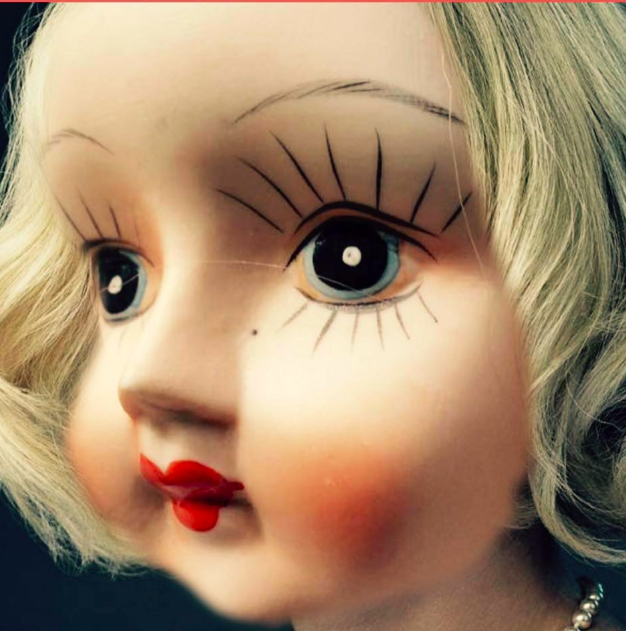
A whole year later, I was reading a fascinating article about reproduction dolls by Canadian doll collector and retailer Jayne Cremasco, who runs Antique Vintage and Artisan Dolls. Jayne had helpfully supplied some pictures of dolls pertaining to be ‘antique’ on eBay. Pictured under the screaming headline of ‘Walda!!!’ was the exact replica of one of my dolls; right down to her Mary Jane shoes.
“These were mass produced in the 1980s in Taiwan,” Jayne forewarns anyone tempted to spend serious cash on one.
“These dolls all had moulded, poorly painted shoes and faces and crude hands. New dolls were advertised in TV guides for sale for $3.88. Today, one in poor condition is worth around $2.”
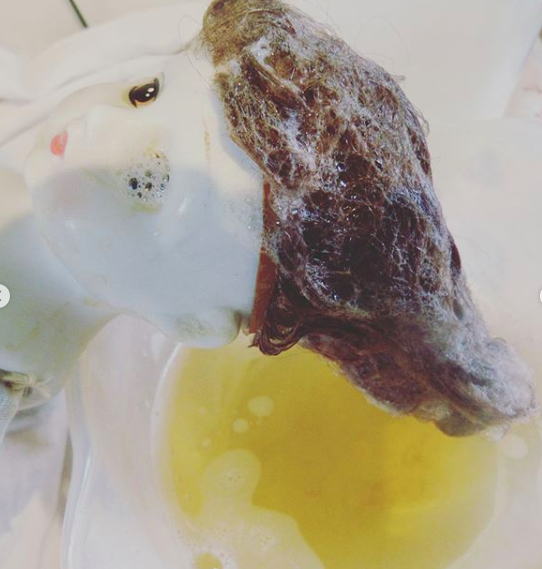
Oh dear. The doll I hoped was a rare Meissen circa 1845, hailed from the decade which gave us My Little Ponies and Duran Duran. My only consolation was that she had a brand name ‘Walda’. Surely that would give her some credibility?
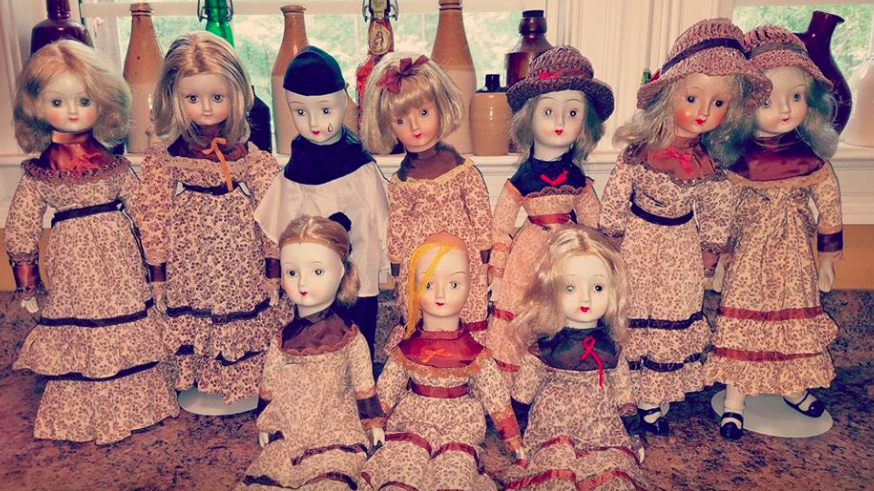
“It’s a nickname based on the puzzle books Where’s Waldo,” laughs collector and Walda enthusiast Steven Dyal of South Carolina, when I ask about the doll’s heritage.
“People started to use the expression ‘Where’s Walda?’ about this doll because she’s everywhere. She looks like a nice little antique doll, but she’s not. She was made in the 70s and 80s so she’s not even vintage. At best, she’s retro. She’s the dime store doll. Lots of collectors turn their nose up at Walda but they’re just like any other doll – worthy of love and attention.”
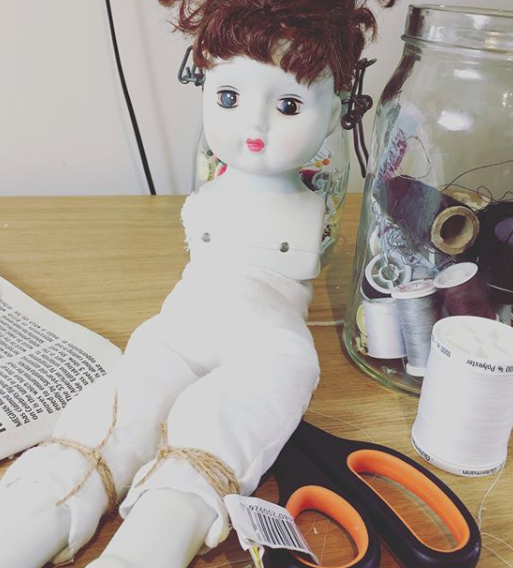
Steven admits he was also seduced by Walda’s subtle beauty and ‘whimsy’ when he started collecting; “It takes a special kind of person to like these dolls,” he says immediately making me feel a whole a lot better.
“I liked them as a child but mom said they were cheap and steered me away. Now I buy them for myself. It’s such a fun doll. Next time you see one, pick her up, give her a hug and say ‘I found Walda’.”
And value? “She is worth what anyone is willing to pay,” he says causing me to feel a flicker of hope.
“An upper limit of $5 is my personal comfort zone – which is why I buy my Walda from thrift stores and not on-line.”
In spite of Steven’s soothing words, the $5 valuation was not in my comfort-zone. Converting dollars into pound – never a fun exercise since Brexit – my two ‘antique’ dolls would be worth £7.76. With the walking doll being only worth a journey to the tip; my auction ‘sleepers’ saw me looking at a massive £17.24 loss – and that’s before factoring in the restoration materials and oodles of man-hours.
“She’s a sly little b****r,” laughs Lorraine Ford, an administrator of the Facebook group Walda’s Friends and Family when I ask her how ‘Waldas’ turned up at a respectable auction house renown for selling antique dolls.
“This is why we all love her. She snuck into that auction and you bought her. Walda does look like a much older doll and people who don’t know the difference think she’s antique. But she IS old and the way she’s made is different from any other doll. The point is, Walda is a cheap, mass produced doll but she is so misunderstood. Members of the group have fun with her – but we love her.”
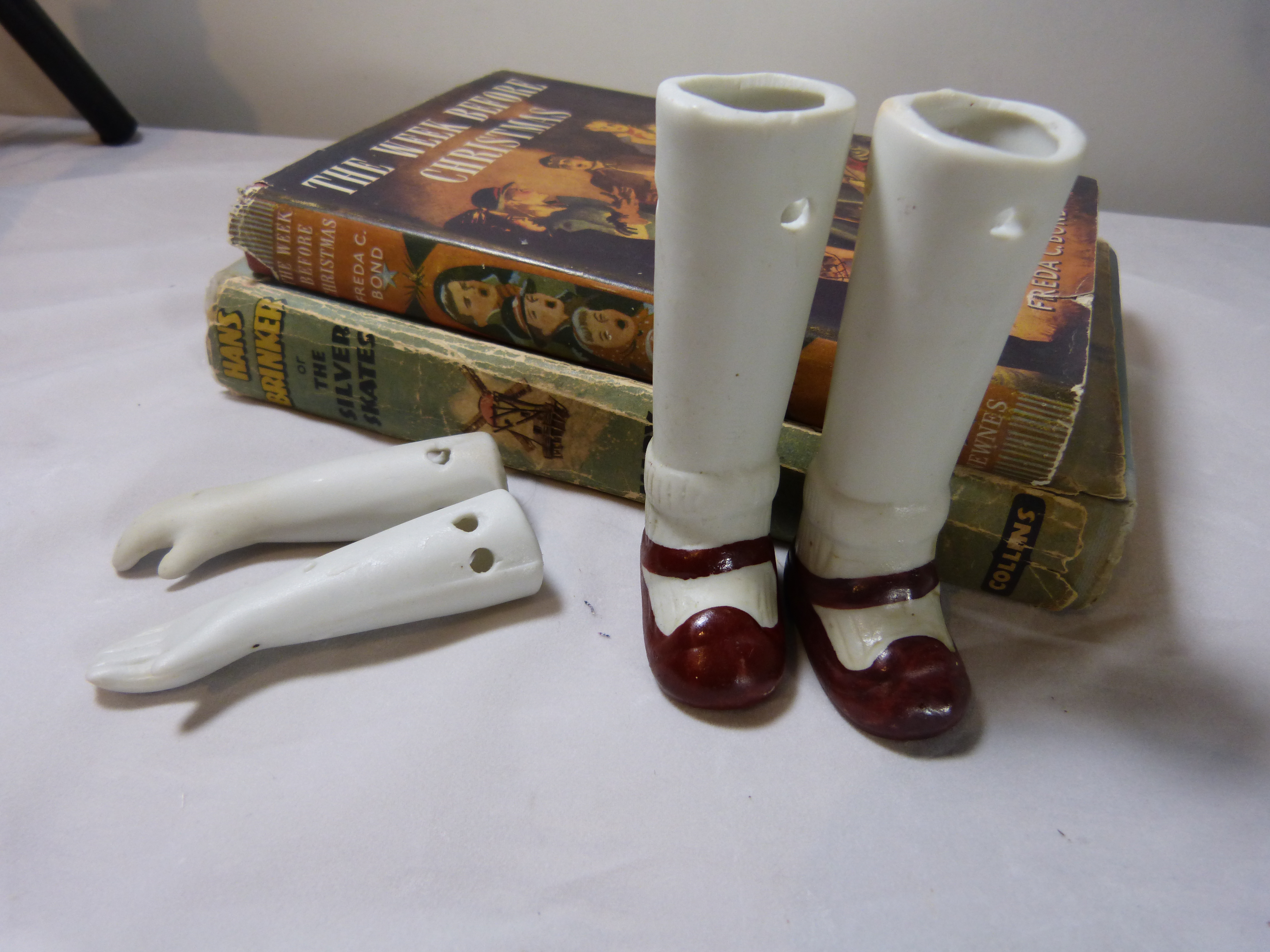
Joining the group marked another turning point in my own ‘Where’s Walda’ journey. The out-pouring of genuine admiration for my restoration efforts was a comfort. Okay, I’d lost a bit of cash but I’d gained a few like-minded friends which eased my auction house fail a little.
And, in a bitter-sweet twist, one of my Walda dolls turned out to be quite a ‘find’.
“Whoa – stop the presses. Your Walda has original brown Mary Jane shoes rather than black,” explains group administrator Kakine Breen, who lives in Brackettville, Texas.
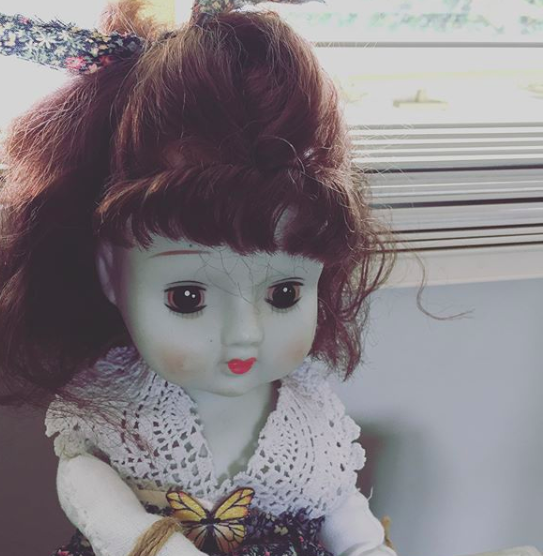
“That’s a new one for the history books. We’re happy to know there is a neat Walda variation out there. Your Walda is very rare.”
Praise from Kakine Breen, the maker of the definitive ‘Walda – story of a ‘Doll of china, with body of cloth, wearing western dress’ on YouTube, more than compensates for the disappointment of losing out on a ‘sleeper’.
Almost. I suspect if you look up ‘gullible’ in the dictionary, you’ll find a picture of me clutching my Walda doll. If you want an answer to the perennial teaser ‘Where’s Wally’ then she’s right here…shedding a little tear for what might have been.
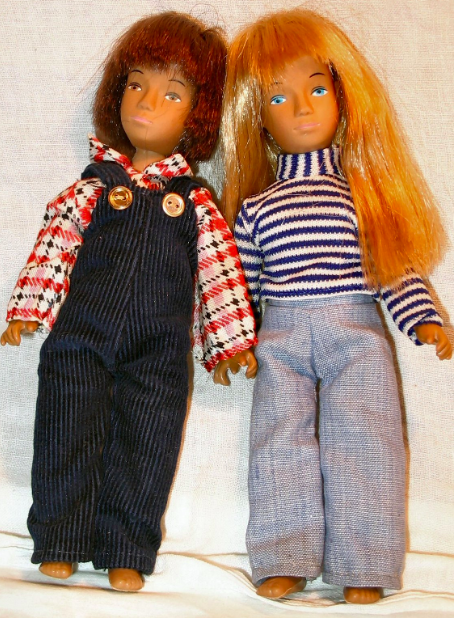
We’ve all been there. Most doll collectors will have been duped by a reproduction doll at some stage in their career. Artist Amanda Boggs of North Carolina, restores and sells dolls through Atelier Mandaline her Etsy site.
Amanda shares her own experiences – and tips.
“Early on in my doll career I was fooled by a Cissy (Madame Alexander doll) look-alike in a blurry photo of a doll lot. I bought the lot for her and when it arrived saw it wasn’t Cissy. Luckily for me it was a Belle Margie who is nearly as valuable as Cissy nowadays because she’s so rare. I guess the best advice I have is to do some research for before you buy. Nowadays it’s so easy since almost everybody has a smart phone. A quick search of eBay should reveal if there are common repros.
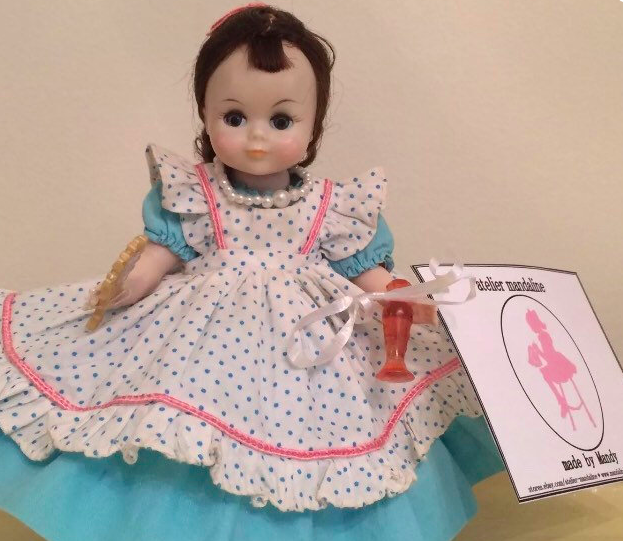
I used this tactic recently when I saw a marked Armand Marseille porcelain toddler doll at a thrift store. The thrift store thought she was worth $50 but something seemed off to me. Nothing – not the eyes or wig or clothing – seemed old enough to be authentic. A quick eBay search in the parking lot revealed Armand Marseille moulds and parts were sold to home crafters in the 1980s. This doll was one of those. She was well done, but not worth more than the thrift store price. Since I’m not a collector I left her there.
So that’s another tip: check the body and eyes and skin for common signs of age. Even the most well-stored old doll will have some yellowing to the skin and eyes, some browning of the glue (mucilage) that attached the wig, and often there’s a little crust of dust back in the corners of the eye sockets or in the ears.
And keep in mind, some copycat or repro dolls are worth quite a bit if they’re rare enough or notorious enough. Take Moni dolls. They were produced by a Swiss company which copied and marketed reproduction Sasha dolls in 1979. They were famously sued and the dolls removed from the market after one year. Those ‘rare’ dolls are now valuable due to their blatant plagiarism and the notorious lawsuit.”
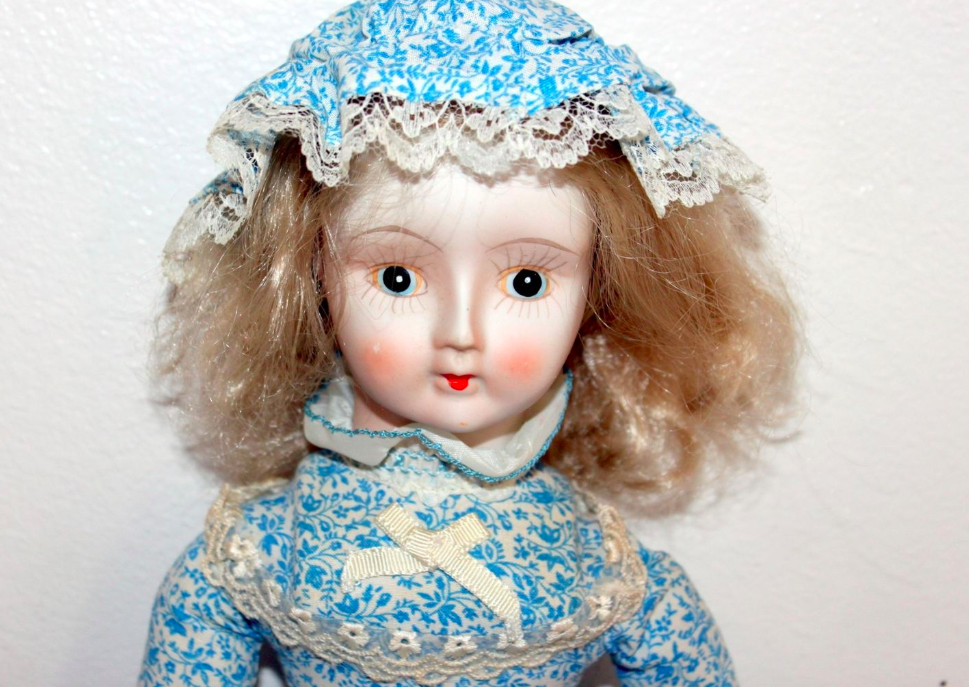
Where did Walda come from – a potted history of the porcelain doll
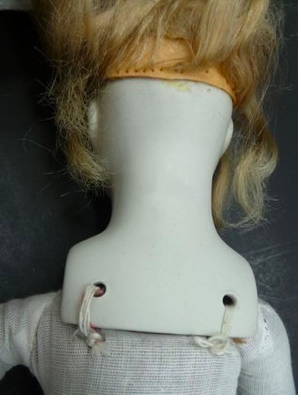
She was launched in the 1970s
Walda dolls were first advertised in magazine like Reader’s Digest in the 1970s – the dolls were sold through magazines for two decades. The dolls had a soft cloth body so she was bendy but the shoulders plate (see right) and limbs were made from porcelain so she was also extremely fragile. According to collector Steven Dyal, the faces were hand-painted – hence the variations. The facial features common to Walda dolls include the long eyelashes, pink cheeks and rosebud mouth.
The first issue dolls were dressed in the style of pioneer dolls – think Little House on the Prairie – and a few were available as ‘kits’ so you could make the dolls from your own fabric. Today’s collectors remain loyal to this original doll; it”s the only one entitled to the nickname ‘Walda’. Subsequent dolls are cousins or Walda family. The dolls also had a composite woven hat which is often decorated with ribbons and flowers.
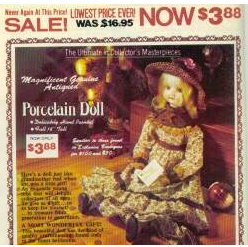 She was antiqued – not antique
She was antiqued – not antique
Those magazine advertisements contained an extremely misleading line about the dolls being ‘wonderful, genuine antiqued, porcelain dolls’. Yes, blink and you’ll miss the ‘d’ on the end of antique. According to the renown Doll Reference website, Walda her fortunes could change given sufficient time and sustained interest.
“Perhaps in another 50 years she will be considered an antique,” the writer explains.
“But for now, she’s a mass produced porcelain doll…whose value today is nominal. Giving her a name (Walda) is probably the best way to help collectors find her in the huge porcelain doll market.
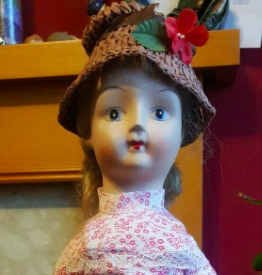
She is like Marmite – doll collectors either love or hate Walda
There are serious doll collectors who loathe Walda. Enthusiast Lorraine Ford, a hairdresser from Newfoundland, believes this is because the dolls were ‘cheap and mass produced’.
“Some collectors even like to make fun of her – Walda collectors have fun with her,” she says.
Walda certainly ruffles feathers; researching through some generic doll web-sites, I discovered a lively on-line discussion between collectors on both sides of the love/hate divide.
‘I am certain I can go through life without EVER owning a ‘Walda’ (shudder!)’. says one hater.
‘She is different but she is adorable…no two are alike,” replies a lover.
Collector Steven Dyal is all too aware of the sniffy reactions of some collectors; “They look at her and think ‘That’s not a doll – it’s a monstrosity’. A lot of collectors take offence at them Walda but she’s same as any other doll,” he says.
“All dolls were made for the same reason – to be played with and appreciated. We should respect that and respect each other.”
She has a family
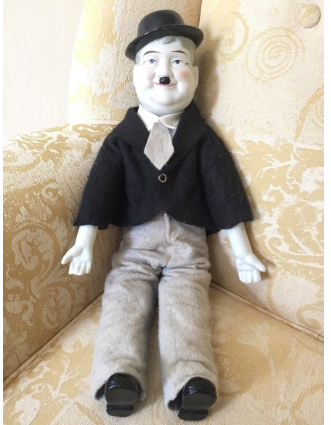
Walda dolls spawned many imitators according to collector Steven Dyal “The ‘Walda’ sculpt was taken by other doll companies ,” he explains.
“They multiplied into many different shapes, sizes and variations when it came to wig options, eye colours and outfits. There have been cloth ones – even a plastic version.”
There’s also a Pierrot doll – with a solitary tear on his cheek – clowns and ‘Laurel and Hardy’ characters.
She owes her alter ego to an eBay doll collector
Kakine Breen, an administrator for Walda’s Friends and Family, says the name of this doll was ‘never known’ until she turned up in an eBay discussion page with the headline ‘Where’s Walda’ back in 2003.
“The late Patricia Baker gave Walda her name,” he explains.
“She started a ‘Where’s Walda’ topic on eBay because this doll was popping up everywhere and being misidentified. The topic thread was created so fellow eBayers could share auction listings/photos when this doll happened to show up.”
The name – and the game of spotting her – has stuck fast ever since.

She’s spawned a fan club
Walda’s Friends and Family Facebook group was formed in 2104 by enthusiasts like Patricia Baker and Kakine Breen.
“Back then I already had a large collection of “Walda” dolls but I only referred to these dolls as ‘The doll in the brown dress’,” Kakine explained.
“When Patricia coined the name we all helped to make it stick by sharing our collections on-line.”
Lorraine Ford was soon in on the party. “I was in another doll group with Patricia and she encouraged me to join,” she says.
“I used to see Walda and walk by – I was interested in much nicer dolls. When I joined the group I realised Walda’s uniqueness. Her pretty painted face and pure innocence just made me fall in love.”
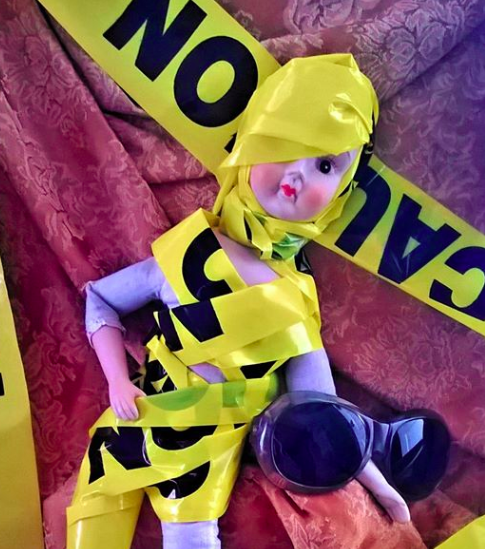
She does the funniest things
Lorraine Ford of Walda’s Friends and Family groups says the Walda enthusiasts have fun with their girl. “Shirley Kennedy, one of the original group founders, even gave her a boob job,” she laughs. Visit the Facebook group and you can find Walda doing the ice bucket challenge, having a seance and enjoying tea parties with teddies.
She has fragile feet
Walda’s feet were also made from glass-like bisque. This led to a distinctive ‘clickerty click’ sound when her Mary Jane-clad feet touch. Small wonder, says Kakine Breen, that the legs are often the ‘first thing to break’ leaving enthusiasts with legless dolls which need replacement limbs (often harvested from other dolls).


She likes to think she’s antique
Walda dolls are still misidentified as older dolls. In December 2018, an eBay listing for this doll (see above) described her as ‘Pretty bisque head doll, possibly of German manufacture, about 1900.’
While the majority of these listings are misinformed rather than mischievous; it show the importance of doing your own research. This doll was listed with a starting price as £17.50 – take £10.00 off and you’re closer to the true value.
Just compare the Walda to a genuine ‘Kestner’ antique German doll (left) which sold in January 2019 for £461. If the price is too cheap – it’s probably a Walda or similar.
She is becoming rare
These days, you will be lucky to chance upon a bargain Walda in a charity shop or jumble sale. Lorraine Ford of Walda’s Friends and Family, says she had scoured thrift shops ‘for years’ without finding the doll.
“She is getting harder to source – and the hat is almost impossible to find,” she confirms.
“Back in the 1970s, real doll collectors didn’t want her -most of them ended up broken and sent to the dump. Some of these girls are nearly 50 years old and those feet are easy to break (see above) – it’s a miracle there are any left. I have so many dolls but Walda is my favourite.”
Value
Prices are creeping up…
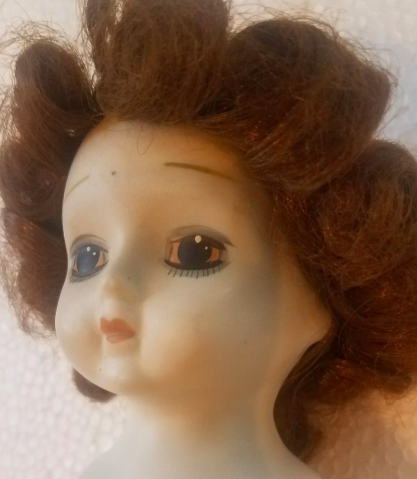
On January 19th 2019, a total of 17 Walda dolls were offered for sale on eBay – all of them from the United States. Only four were priced at under £10. One seller had listed a so-called ‘French girl Walda’ for $49.99 ($38.73).
Ironically, the invention of the nickname ‘Walda’ is leading to another problem; namely sellers assuming this is a factory mark with inherent value.
Witness this listing;-
“Early American German woman. Nice estate find. Early 1940-50 German bisque Walda, hand-painted.”
While I have no reason to doubt it was found in a sale – the only bits of doll’s description that are accurate are ‘bisque’ and ‘hand-painted’. Although the seller implores you to ‘buy with confidence’ I suggest you follow the tips from doll expert Amanda Boggs (see above).
If you’ve done you homework (I refer you once again to Kakine Breen’s excellent video history) you’ll realise she isn’t even a Walda. She’s cute but a later cousin. But, the seller has listed her for $12.99 (£10.10) which is about right.
Having spoken to a lot of collectors expect to pay around £10 for your doll – slightly more if she’s in good original condition and has her woven hat.
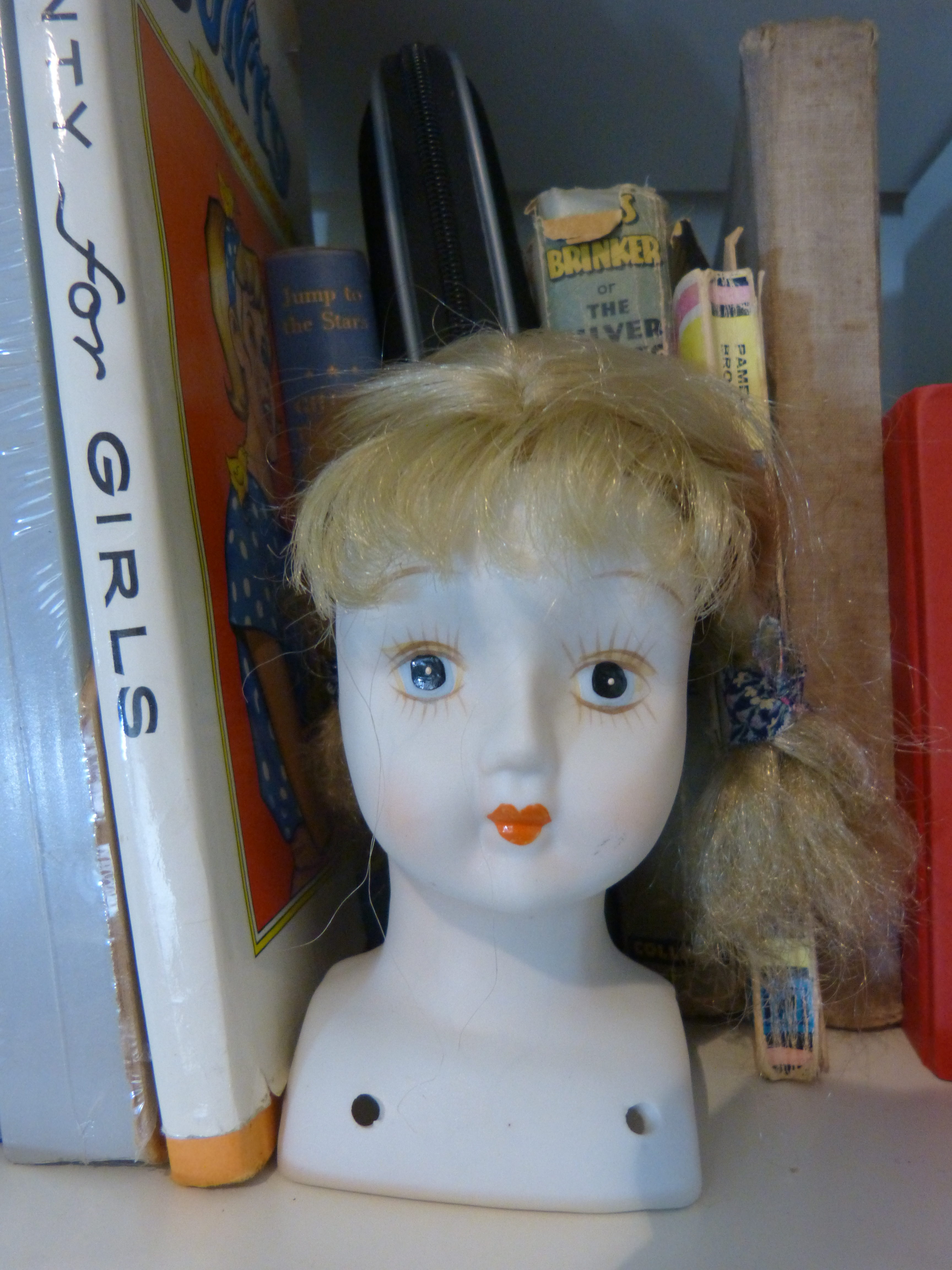
Conclusion
By this time next year, I will not be a millionaire on the strength of selling a ‘Walda’ doll. I have learned an important lesson about researching a doll before you buy. But I don’t have buyer’s regret. As is often the case, I’ve made some new friends of passionate Walda collectors.
Collector Lorraine Ford and I both agree that the prices for even antique dolls – except the mint ‘Roll Royce’ varieties – are on the floor which just re-inforces the importance of buying with love and not with the expectation of making money.
Talking of which; both my Walda dolls are on eBay at realistic prices. I will let you know how they fare.


